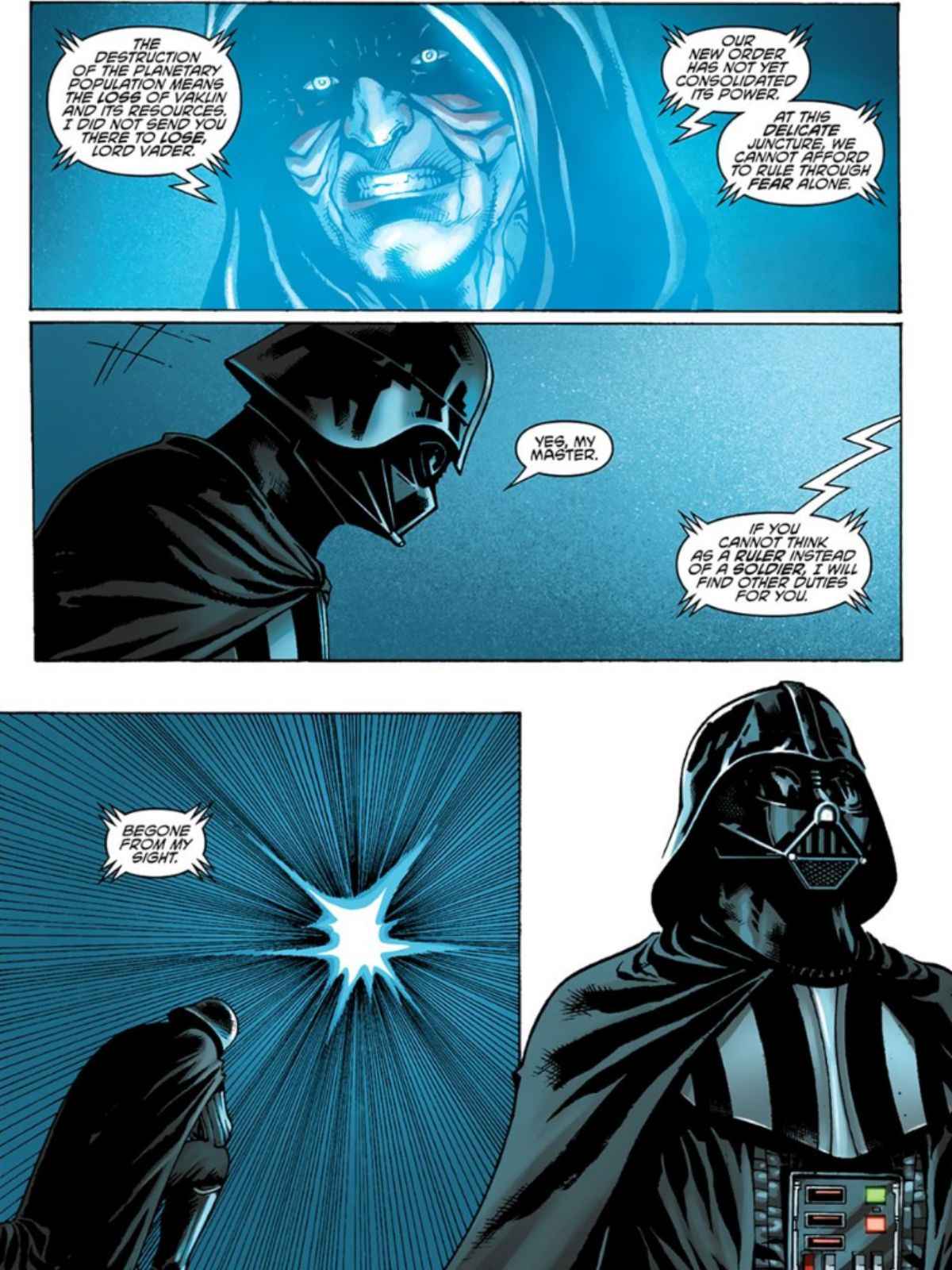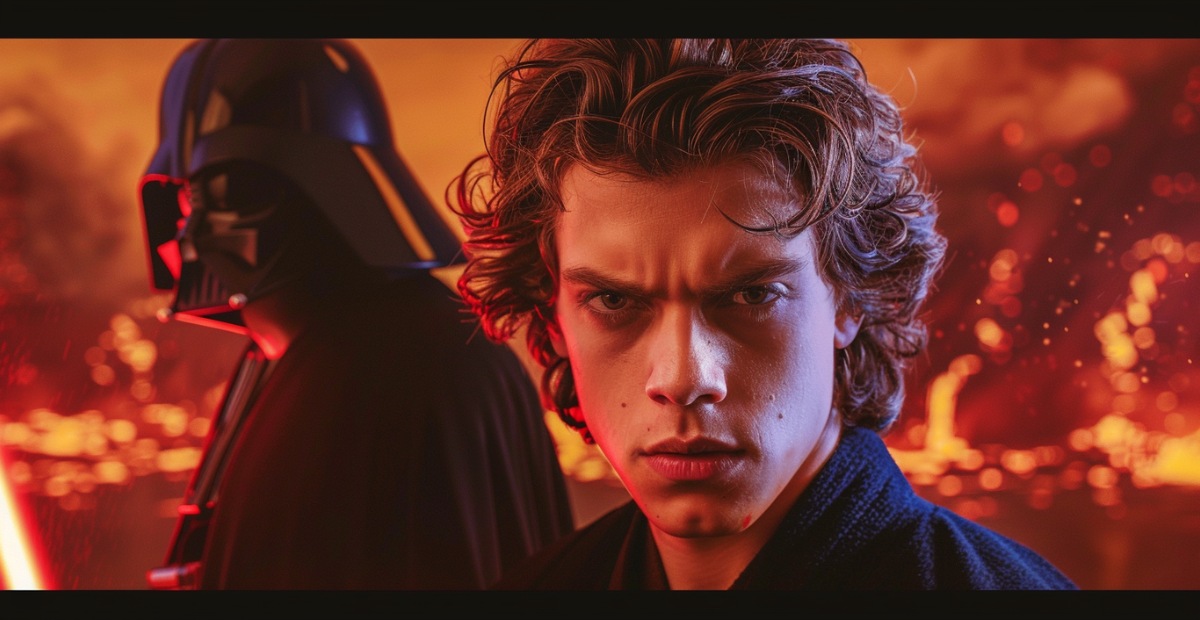Hey there, Star Wars fans! Have you ever noticed how Darth Vader, the menacing Sith Lord, seems a lot calmer than his earlier self, Anakin Skywalker?
It’s quite a transformation from the fiery, impulsive Jedi to the cool, calculated Sith. Let’s explore the reasons behind this dramatic change in demeanor.
1. The Burden of Expectations
When we look back at Anakin Skywalker’s journey, one thing becomes clear—he was under an overwhelming amount of pressure from the start. Being called the Chosen One wasn’t just a compliment, it was a burden. Everyone expected him to be the Jedi who would bring balance to the Force, and that kind of expectation shaped everything about him.
As a Jedi, he was never just allowed to grow at his own pace. The Council didn’t fully trust him, yet they still counted on him. He pushed himself harder because of it, trying to prove his worth through action and power. But that constant need to prove himself only fed into his frustration and made his emotions harder to control.
We saw this over and over—how Anakin’s impatience, his fear of loss, and his drive to be the best led to reckless decisions. One clear moment was during Attack of the Clones, when he disobeyed orders on Geonosis to rush in and save Obi-Wan. He put himself and Padmé in danger, not because it was the right move tactically, but because he couldn’t sit back and wait. He had to act—and it nearly cost them their lives.
2. The Psychological Transformation
When Anakin became Darth Vader, it wasn’t just his body that changed—it was his entire identity. The trauma of Mustafar, losing Padmé, and being nearly killed by Obi-Wan didn’t just scar him physically. It shattered whatever was left of Anakin Skywalker inside. What came next was emotional numbness.
We can feel that shift in Revenge of the Sith. After Palpatine tells him that Padmé is dead, Vader doesn’t explode in rage like the old Anakin would. He screams, yes—but it’s different. There’s no fire in it. It’s a hollow, broken sound. From that moment on, something inside him shuts down.
He no longer has anything left to fear or fight for. That pain turns inward, and what we see from then on is a version of him that’s colder, quieter—more calculated. It’s not that Vader doesn’t feel anything; it’s that he’s buried it so deep, it only comes out when absolutely necessary. His calm isn’t peace—it’s grief with nowhere left to go.
3. The Armor as a Symbol
When we see Vader for the first time, that black armor instantly tells us everything. It’s more than just a life-support system—it’s a mask, a prison, and a statement all at once. For Anakin Skywalker, becoming Darth Vader meant putting on that suit and leaving his old self behind, both literally and symbolically.
The armor isolates him from the world. There’s no warmth, no expression, no humanity—just a cold, towering figure that moves with purpose. We’ve heard it said he’s “more machine than man,” and in a way, that’s exactly what Palpatine wanted. The armor cuts him off from feeling anything. It amplifies his power but also buries his past.
There’s a moment in Star Wars Rebels when Ahsoka damages Vader’s mask and we hear both Anakin and Vader’s voices mix together. It’s haunting. And in that brief second, we see the man inside the machine again—struggling, but buried under layers of pain and control.
4. The Role of Palpatine
We can’t talk about Vader’s transformation without talking about Palpatine. Once Anakin became Darth Vader, the Emperor took total control of his life—physically, mentally, and emotionally. But what’s scary is how good Palpatine was at shaping him into the perfect weapon.
Palpatine didn’t want an angry, out-of-control apprentice. He wanted someone who could focus that rage like a blade. So instead of letting Vader spiral the way Anakin used to, he taught him how to take all that pain and channel it—turning it into something cold, sharp, and powerful.
That’s a huge part of why Vader comes off so calm. He’s not calm because he’s at peace—he’s calm because he’s trained to be. He’s learned that fury doesn’t need to be loud to be lethal.
One example I really like that shows how Palpatine shaped Vader into a true Sith ruler—not just a brute enforcer—comes from Star Wars: Purge – The Tyrant’s Fist. In the story, Vader is sent to the planet Vaklin to bring it under Imperial control. At first, he approaches it like Anakin would—using destruction, fear, and violence to try and force submission. But after too many casualties and too much chaos, Palpatine steps in and delivers a brutal reality check. He tells Vader: “The destruction of the planetary population means the loss of Vaklin and its resources. I did not send you there to lose, Lord Vader. Our new order has not yet consolidated its power. At this delicate juncture, we cannot afford to rule through fear alone. If you cannot think as a ruler instead of a soldier, I will find other duties for you. Begone from my sight.”

Palpatine was teaching Vader to rule, not just destroy. That lesson helped mold the quiet, commanding figure we see throughout the original trilogy.
5. Experience and Maturity
Over time, Vader gained more experience and wisdom. He learned the value of patience and strategic thinking.
- As Anakin, he often acted impulsively, driven by immediate desires and emotions.
- As Vader, he became more strategic and deliberate, understanding that patience and planning could achieve his goals more effectively.
Years of serving as the Emperor’s enforcer honed Vader’s skills and judgment. He became adept at political maneuvering, military strategy, and the dark arts of the Sith.
This maturity and experience allowed him to remain calm and focused, even in the most challenging situations.

Conclusion
In summary, the transformation from Anakin Skywalker to Darth Vader involved a complex interplay of emotional, psychological, and physical changes.
The pressure of being the Chosen One, the influence of the dark side, traumatic experiences, the symbolism of his armor, Palpatine’s mentorship, and his growing experience all contributed to making Darth Vader a much calmer and more controlled figure than his former self.

